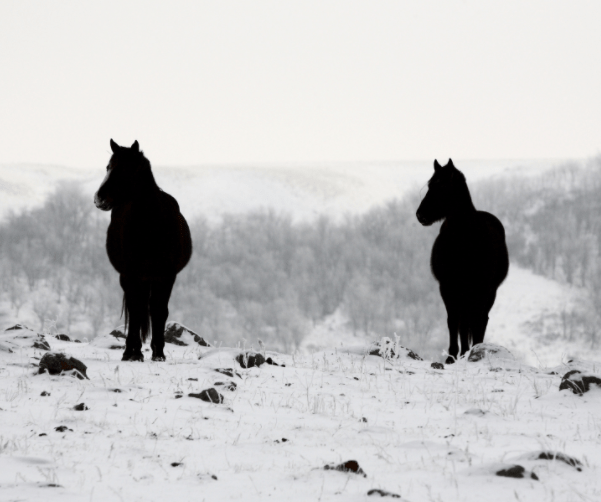How To Manage Horse Pastures During Winter

How to Manage Horse Pastures During Winter
Horse pastures during winter can become dangerous, to both yourself and your horse if you fail to uphold an adequate maintenance schedule. A fall in temperatures, along with increased rain, wind, frost, and even snow, can render your pasture inhospitable for your horses and leave the ground requiring extensive repairs. However, by following a stringent management plan, you can ensure that your fields remain in the best possible condition during the colder months.
Protect the ground
To ensure that your horse has plenty to munch on in spring, you need to be sure that your pasture is managed correctly during cold spells. This means that you need to protect the ground to ensure that the horses aren’t leaving the swards any shorter than around three inches. Otherwise, you risk long‐term damage and an increased chance of disease. Occasionally section off areas of your pasture and rotate the horses to each section. Also, keep in mind that the grass requires more time to rest in colder months.

Prevent Compaction
Overgrazing and particularly wet weather can lead to a phenomenon called soil compaction, which is where the ground becomes particularly wet and soft. Not only does this leave the land vulnerable to weed growth and disease, but also restricts healthy root growth and water filtration. If you do only one thing on this list relating to horse pastures during winter, avoiding compaction should undoubtedly be where you place your efforts.

Fertilise your horse pastures during winter
Spreading fertiliser in winter means that your pasture will enjoy more vigorous growth in the spring and encourage a thicker sward during the winter. There are many good fertilisers on the market that are specifically designed for use in horse paddocks. This is because they are manufactured for slow release over a period of three months and offer all the nutrients necessary for a horse. Just a month or so after you’ve applied fertiliser, you’ll notice that a visible difference in the quality and appearance of your fields.

Stop Horses Queuing in Cramped Areas
Horses have a tendency to gather in cramped areas during the winter, such as near gates and in corners. This will be particularly prevalent when the weather is poor, and the horses get bored. However, if you allow gatherings in these areas, the ground can become damaged. If you’ve got the time and resources, then it’s definitely a good idea to turn the horses out for short periods, to give them some exercise and prevent boredom.
Introducing more hay bales into the paddock is also a way to keep your horses entertained and away from cramped areas. Installing a temporary gate, a ways back from the main entrance is another option – but this will need to be moved around to prevent compaction.

Install Thorough Drainage
As we’ve mentioned, the wetter months pose a real problem for your pasture – particularly in the UK. This is why it’s crucial that you’re building a comprehensive drainage system, to prevent issues such as excess water build‐up. Ideally, you’ll have already ensured that your paddock is situated in an area where there is a good deal of natural drainage, on high ground with a slight slope. But, it’s still crucial that you examine the site before the bad weather to ensure the drainage is sufficient. Gravel underneath the footings helps the surface to drain naturally, and drainage pipes can transport water away from the pasture. Any ditches nearby should also be cleared of any debris so that drainage can flow naturally.

Protect Fencing
Obviously, wooden fencing around the pasture can become rotten if it hasn’t received regular treatment before the winter. If you need to replace any fence posts, it’s important to make sure that you purchase from a manufacturer with a rot guarantee – this is usually up to 15 years. Alternatively, use creosote on your posts to increase lifespan. Also, be sure to inspect your fencing to ensure that it is entirely secure, excess wind can dislodge or damage posts, which could allow the horses to roam free or worse pose a risk of injury. You might also find that your horses have chewed panels and posts; in this case, you should consider treating them with a deterrent, such as oil and creosote alternatives.

Takeaways on horse pastures during winter
A comprehensive maintenance approach throughout winter will ensure that your pasture stays healthy and in good condition. Prevention is better than cure, they say, so take the essential steps to protect your paddock now, so that when spring arrives, you do not have to resolve any issues.
Stephen Beal is a grass seed expert and the Sales & Marketing Manager at www.barenbrug.co.uk








